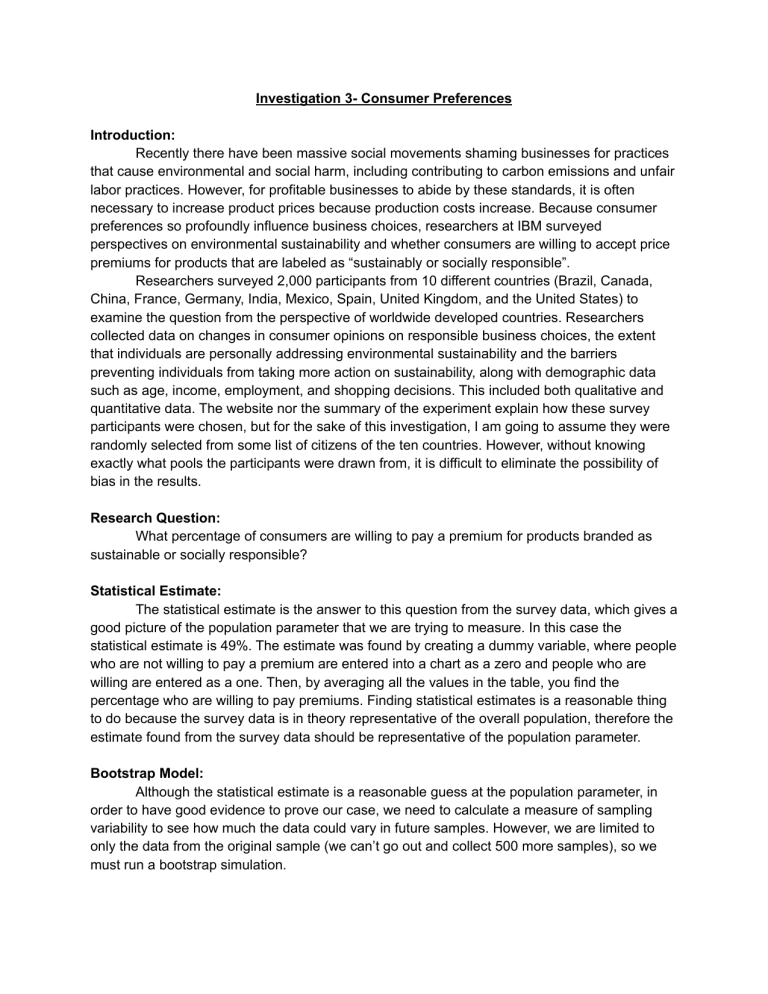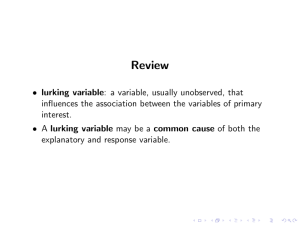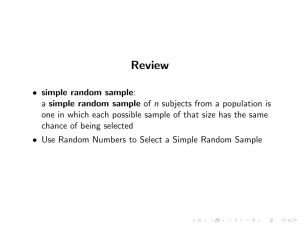
Investigation 3- Consumer Preferences Introduction: Recently there have been massive social movements shaming businesses for practices that cause environmental and social harm, including contributing to carbon emissions and unfair labor practices. However, for profitable businesses to abide by these standards, it is often necessary to increase product prices because production costs increase. Because consumer preferences so profoundly influence business choices, researchers at IBM surveyed perspectives on environmental sustainability and whether consumers are willing to accept price premiums for products that are labeled as “sustainably or socially responsible”. Researchers surveyed 2,000 participants from 10 different countries (Brazil, Canada, China, France, Germany, India, Mexico, Spain, United Kingdom, and the United States) to examine the question from the perspective of worldwide developed countries. Researchers collected data on changes in consumer opinions on responsible business choices, the extent that individuals are personally addressing environmental sustainability and the barriers preventing individuals from taking more action on sustainability, along with demographic data such as age, income, employment, and shopping decisions. This included both qualitative and quantitative data. The website nor the summary of the experiment explain how these survey participants were chosen, but for the sake of this investigation, I am going to assume they were randomly selected from some list of citizens of the ten countries. However, without knowing exactly what pools the participants were drawn from, it is difficult to eliminate the possibility of bias in the results. Research Question: What percentage of consumers are willing to pay a premium for products branded as sustainable or socially responsible? Statistical Estimate: The statistical estimate is the answer to this question from the survey data, which gives a good picture of the population parameter that we are trying to measure. In this case the statistical estimate is 49%. The estimate was found by creating a dummy variable, where people who are not willing to pay a premium are entered into a chart as a zero and people who are willing are entered as a one. Then, by averaging all the values in the table, you find the percentage who are willing to pay premiums. Finding statistical estimates is a reasonable thing to do because the survey data is in theory representative of the overall population, therefore the estimate found from the survey data should be representative of the population parameter. Bootstrap Model: Although the statistical estimate is a reasonable guess at the population parameter, in order to have good evidence to prove our case, we need to calculate a measure of sampling variability to see how much the data could vary in future samples. However, we are limited to only the data from the original sample (we can’t go out and collect 500 more samples), so we must run a bootstrap simulation. A bootstrap simulation takes the data from the initial sample and puts it in a sampler. Bootstrap simulations are run with replacement so that there is possibility for sampling variation in a sample that is still representative of the overall population. The standard deviation found through the bootstrap model is 0.01139, which means there is very little variability in the data. The SD helps us measure sampling variability, and in this case it is very small (1%), meaning there is very little sampling variability. Uncertainty: Using the SD, we can now account for the uncertainty in the data, which is found using the margin of error and confidence interval. The margin of error is found by multiplying the standard deviation by 2. 0.01139 X 2, which is 0.02278, our margin of error. The compatibility Interval is the range within the margin of error around the mean, therefore by subtracting and adding the margin of error from the mean, the compatibility interval is from .46622 to .51178. The compatibility interval gives a range of plausible results for what the overall population could be expected to respond with about whether they would be willing to pay the premium for responsibly sourced products. Using the data from the simulation, we could reasonably predict that between 46.6 and 51.1 percent of the population is willing to pay an increased premium for responsibly sourced products. Using the margin of error, this could be phrased as we could expect 48.9% of people to be willing to pay, plus or minus 2.28%. Generalizability: Now that we have data from the sample and have simulated sampling variability, we must now look at whether our sample data is generalizable (applicable) to the larger populations of people in those countries. There are two factors that play into generalizability, representativeness and uncertainty. To evaluate representativeness, we must examine whether our sample is representative of the overall population. This means evaluating bias in the sampling method. Bias is most commonly avoided through random sampling. However, our study does not specify how each participant was chosen to complete the survey. For the sake of analyzing generalizability, I will assume in the absence of information that the sample was taken randomly from some list of citizens of each country in the study. While this would include random sampling, there are also aspects of bias. One possibility is convenience bias because the people on the lists were a convenient place to draw names from, but the lists may not have been representative of the overall consumer population (for example: non-citizen consumers). Additionally, surveys typically have an aspect of voluntary response bias because there is the possibility that some of the randomly chosen participants chose not to respond. This could lead to bias if there is some factor that sets people who chose not to respond as systematically different than people who chose to respond. However, voluntary response bias is very difficult to avoid in human studies (as involuntary studies are unethical), therefore we cannot let it affect our perception of the data’s generalizability. Given that the surveys were sent out to randomly selected participants from a list of citizens in each of the ten countries in the study, this study has pretty good generalizability on the issue of representativeness. We can reasonably expect that the 2,000 survey participants generally represent the opinions of the entire population of those countries. We must also evaluate generalizability in regards to uncertainty. This was calculated above, and as there is a relatively small amount of uncertainty. This allows us to conclude that the survey results can be expected to be representative of the overall populations of those countries. Conclusion- Roughly 48.9% of consumers in the given countries are willing to pay premiums to support responsible business practices. This is a significant percentage of the population, however, it may not be enough for businesses to find it worth reworking their entire business models to reflect ethical and sustainable practices. And perhaps a better question isn’t whether people are willing to pay more for responsibly sourced products, but how much more people are willing to pay before they default to the harmful cheaper option. Finding this breaking point would likely be more useful to businesses who are determining whether or not to go sustainable because they would be able to calculate the specific cost-benefits of each option.






